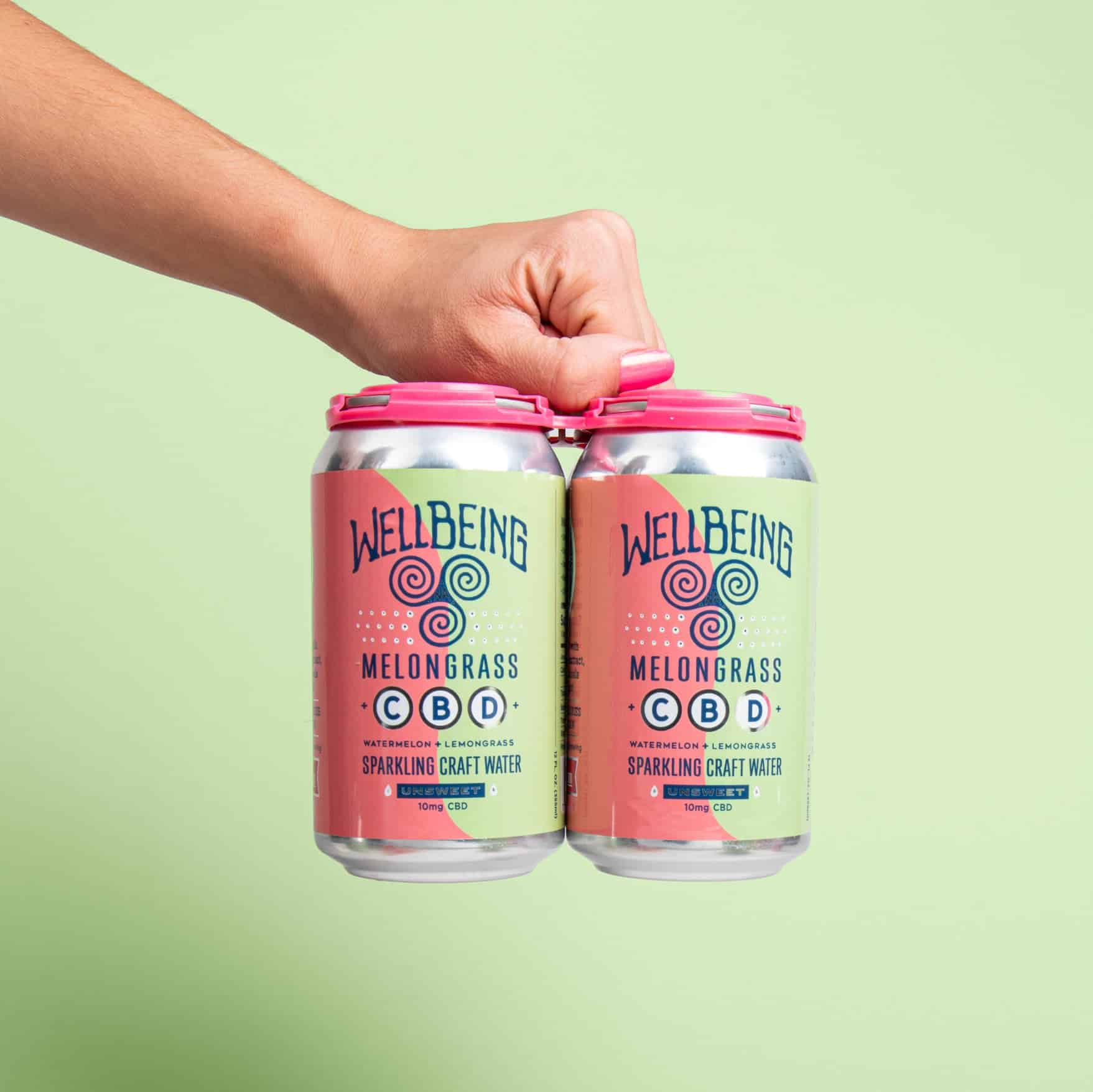The first time I tried a drink infused with a cannabinoid — the name given to the group of active substances in hemp and cannabis plants — I’d just finished a race in St. Joe State Park. A vendor handed me a WellBeing MelonGrass CBD Sparkling Water, telling me it could help relax my muscles and prevent inflammation. It tasted great on a hot day after a 3-mile trail run, and if it aided with recovery, even better.
The next time I had a cannabinoid drink was at a happy hour held at a local outdoor store. Taking a break from beer, I sipped a Midwest Magic Tropical Mango Cannabis Seltzer. It also was delicious, but midway through my drive home that evening, I began to feel a little fuzzy around the edges. Turns out the drink contained delta-8 THC, a psychoactive element closely related to delta-9 THC.
Delta-9 THC is what people are usually referring to when they talk about THC and is the compound in cannabis that produces a “high”.
I made it home fine, with only myself to blame for not being more mindful of what I’d put in my body.
If you, too, have been curious about these increasingly popular drinks but don’t know CBG from CBD from THC, here’s a breakdown of common cannabinoids and their effects from the experts at Midwest Magic, a hemp and medical marijuana manufacturer in St. Louis.
CBG
Called the “Mother of All Cannabinoids”, cannabigerol (CBG) is the precursor to CBD, CBC, and THC. Studies have shown the potential for CBG as a neuroprotective, suggesting use in treatments for neurodegenerative diseases like Huntington’s, multiple sclerosis, and Parkinson’s.
CBG is reported to potentially have modulatory effects on THC, counteracting adverse effects like anxiety and decreasing the feeling of being high. While you won’t necessarily feel CBG, users do report being more clear-minded and alert.
CBD
Cannabidiol (CBD) is a non-psychoactive cannabinoid that is becoming a more common treatment method for a variety of health issues.
While the exact mechanisms aren’t fully understood yet, CBD has shown great potential as an anti-anxiety, anti-depressant, and pain reliever. It also modulates the potential adverse effects of THC, reducing anxiety and the feeling of being high 𑁋 a literal buzzkill.
To treat seizures caused by two rare forms of epilepsy, Lennox-Gastaut and Dravet syndrome, doctors have started to prescribe Epidiolex, an FDA-approved CBD isolate.
CBN
Cannabinol (CBN) is a non-psychoactive cannabinoid produced as THC ages, making it most prevalent in older cannabis plants.
Research on the cannabinoid is limited; however, existing studies suggest potential use as an antioxidant, anti-inflammatory, and bone-growth stimulator. When combined with THC, it can increase sedative effects.
Delta-9 THC
Most commonly referred to as just THC, delta-9 THC is the most-studied compound in cannabis plants and is most popular for its ability to get you high.
Delta-9 has shown great potential as an anti-nausea medication as well as a pain reliever, anti-inflammatory, antispasmodic, and muscle relaxant.
The FDA has currently approved two synthetic THC drugs used to treat nausea in cancer patients and anorexia in AIDS patients.
Delta-8 THC
Quickly gaining popularity, delta-8 is a mellowed-out, less potent form of THC. Often likened to a cannabis indica, users report feeling sleepy and relaxed upon consumption. Common uses for delta-8 include sleep aid and anti-inflammatory.
Delta-10 THC
Similar to delta-8 and delta-9, delta-10 THC interacts with receptors in the brain to produce euphoric effects.
Not much research has been done on the specific effects and benefits of delta-10, though more is expected in the coming years. Anecdotal reports suggest that delta-10 produces energizing and mood-boosting effects similar to that of a cannabis sativa strain.
Kate White, operations and marketing manager for Midwest Magic, recommends people study a cannabinoid beverage and brand before imbibing. “There can be a lack of consistent testing when it comes to hemp and cannabis products,” she said. “We try to be very clear and visible about that. We do a full panel test on every product and share that with consumers.”
Midwest Magic has a dedicated page on its website that shows certificates of analysis (COA) and teaches people how to read them. QR codes right on its product packaging link to these resources. “We break it down really simply,” White said. “I think that’s crucial.”

WellBeing MelonGrass CBD Sparkling Water.
Joshua Loyal agrees about self-education, adding that starting small and sampling is also important for consumers. Loyal is the founder of St. Louis-based Mighty Kind and also helped launch WellBeing’s CBD seltzers.
“Dosage control is really important,” he said, explaining that the measurement and distribution of cannabinoid ingredients in beverages is much easier to pinpoint than in, say, gummies. “Offering a clean, controlled product allows people to figure out what works for them, without the sugars or whatever other substances were in there without them knowing.”
Loyal recommends individuals “experiment on a light or micro-dose level first,” as each person’s reaction to cannabinoids is personalized. Liquids have a faster absorption rate, he says, so start with half a can and wait 15 minutes, then go from there.
For those wanting to use cannabinoids to enhance performance or recovery, “CBD and CBG are the best place to start,” said Loyal. “CBG has a more noticeable effect on the body. Most people who drink CBG feel something, not a buzz or high, but it does impact the pain sensors. Delta-8 is great for relief, but it’s psychoactive and could make people drowsy. It’s best to save that for after, so you’re not compromising your performance.”
Author: Brad Kovach is the editor/publisher of Terrain Magazine.


Leave A Comment